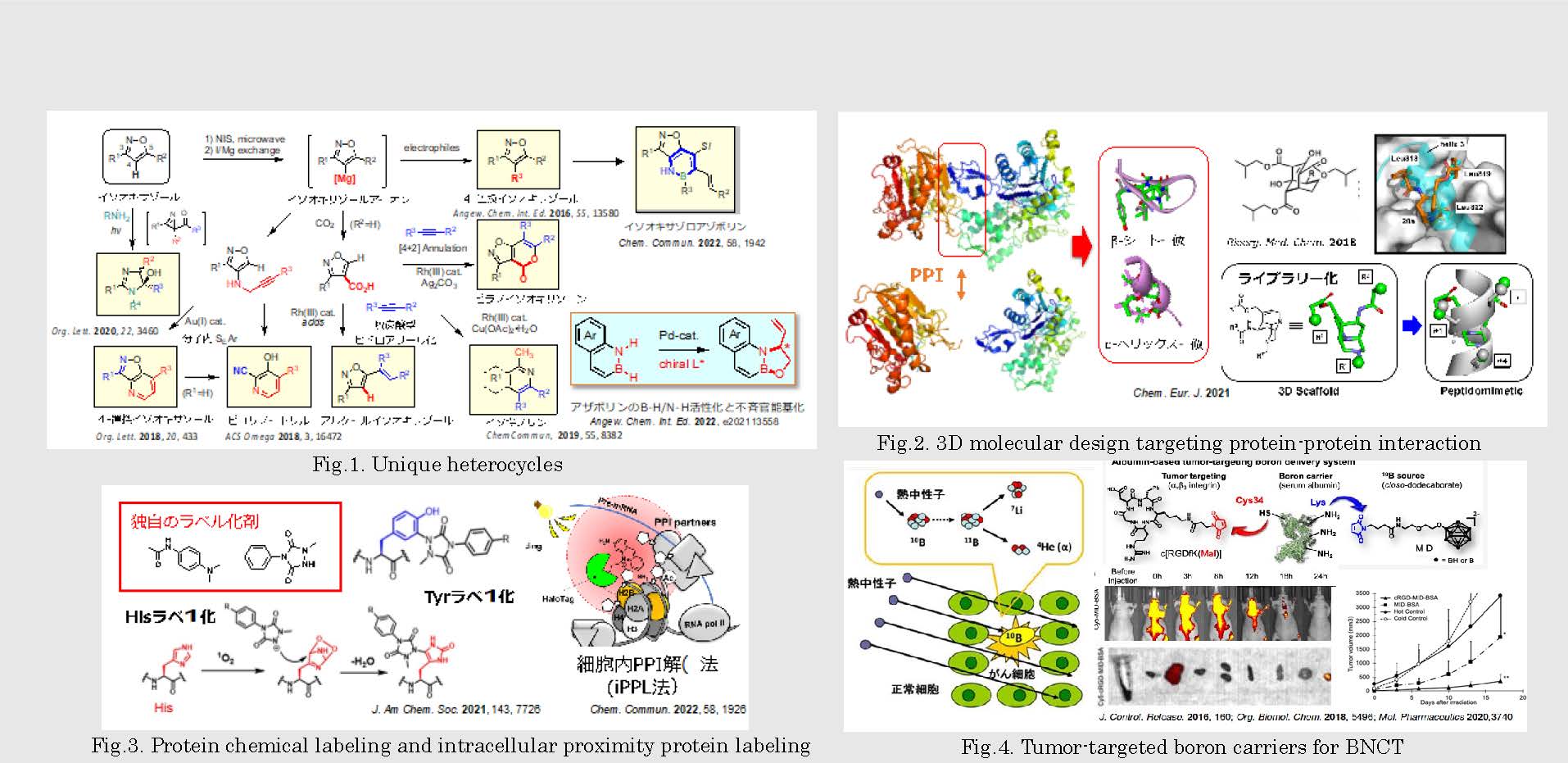CLS
Laboratory for Chemistry and Life Science, Institute of Innovative Research, Tokyo Institute of Technology
東京工業大学
科学技術創成研究院
化学生命科学研究所

LAST UPDATE 2020/06/09
-
研究者氏名
Researcher Name中村浩之 Hiroyuki NAKAMURA
教授 Professor -
所属
Professional Affiliation東京工業大学科学技術創成研究院化学生命科学研究所
分子創成化学領域
Laboratory for Chemistry and Life Science, Institute of Innovative Research, Tokyo Institute of Technology
Molecular synthesis -
研究キーワード
Research Keywords有機合成化学
創薬化学
ケミカルバイオロジー
中性子捕捉療法
Synthetic organic chemistry
Medicinal chemistry
Chemical biology
Neutron capture therapy
- 研究テーマ
Research Subject -
有機合成化学を基軸とした生命機能の解明と制御、創薬戦略
Exploring and controlling vital function using designed synthetic molecules for innovative drug discovery
研究の背景 Background
我が国の死亡原因の第一位はがんであり、2人に1人ががんを発病し、3人に1人ががんで死亡しています。最近では、分子標的治療薬の開発により、治療効率の改善が図られてきているが、まだまだ治療困難ながんもあり、こういった難治性がんに対する新しい分子標的治療薬剤の開発が必要とされています。
Nowadays, the number one cause of death is cancer in our country. A person for two people has had a cancer and a person for three people has died of cancer. Although the antitumor drugs for molecular target treatment have been developed, there are still many cancers for which treatment is difficult. Therefore, development of new types of drugs effective for treatment of these cancers is urgent requirement in cancer therapy.
研究の目標 Outcome
有機合成化学を基軸として、新しいがん治療を目指した創薬研究、ケミカルバイオロジー研究分野における標的分子制御の技術革新を目指した研究を展開しています。特に、金属触媒化学に立脚した新合成方法論開拓をはじめ、タンパク質間相互作用に着目した新しい低分子創薬や中性子捕捉療法のためのホウ素薬剤の開発と実用化を目指しています。
The main research interests are focused on discovery of drug candidates for anticancer agents targeting protein-protein interaction (PPI), development of new methodology for target protein-selective modification in chemical biology, and development of efficient boron agents in neutron capture therapy of cancer based on organic synthetic technology to explore and control vital function for innovative drug discovery.
研究図Research Figure

Fig.2. 3D molecular design targeting protein-protein interaction
Fig.3. Protein chemical labeling and intracellular proximity protein labeling
Fig.4. Tumor-targeted boron carriers for BNCT
文献 / Publications
Angew. Chem. Int. Ed. 61, e202113558 (2022); Chem. Commun. 58, 1942 (2022); Sci. Rep. 11, 2410 (2021);
J. Am. Chem. Soc. 143, 7726 (2021); Mol. Pharm. 17, 3740 (2020);Org. Lett. 22, 3460 (2020),
Angew. Chem. Int. Ed. 55, 6758 (2016), J. Control. Release, 237, 160 (2016), Nature Commun. 7, 13491 (2016),
Angew. Chem. Int. Ed. 52, 8681 (2013)
研究者HP
- hiro
 res.titech.ac.jp
res.titech.ac.jp - https://www.syn.res.titech.ac.jp/